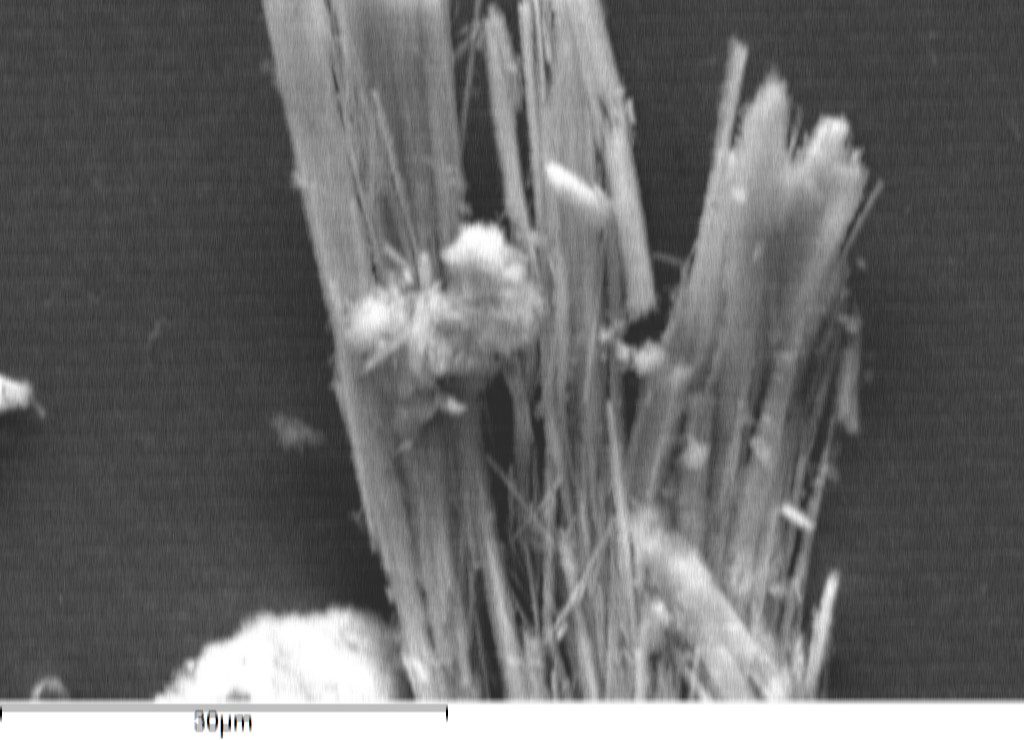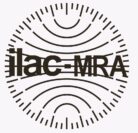
Are You Counting the Right Sized Fibres?
Actinolite has commonly been acknowledged to be a less hazardous form of asbestos. But longitudinal studies show that shorter and thinner fibres may be just as hazardous – and that the fibre size might be too thin to be detected by standard optical techniques!
Cracker dust (also known as crusher dust or quarry fines) is finely crushed blue metal or other aggregate rock which is commonly used as a base for roadways, paths, as a screed for landscaping or for hardstand areas. It is known for its good compaction properties.
Cracker dust supplied from two quarries in the Pilbara has historically been known¹,³, to inadvertently contain actinolite asbestos mineral fibre at low concentrations. Actinolite (CAS # 12172-67-7)⁶, an amphibole asbestos mineral with the chemical formula [Ca2(Mg,Fe2+)5Si8O22(OH)2]n can occur in both asbestiform (low diameter and high aspect ratio) and non-asbestiform (cleavage fragment) morphologies. All forms of asbestos (chrysotile, crocidolite, amosite, tremolite, actinolite and anthophyllite) as well as other highly acicular mineral fibres (richterite, erionite, winchite, fluoro-edenite) are classified as group 1 human carcinogens².
Actinolite is an intermediate-member mineral of the solid-solution series from the magnesium-rich tremolite to the iron-rich ferro-actinolite. The International Agency for Research on Cancer (IARC) quotes a study conducted in 1989 by Pott et al⁹., which concludes that relatively low concentrations of fibrous actinolite dust had significant impacts on the tumour incidence in intrapleural experiments on rats. Similar dust loadings with blue asbestos, otherwise known as crocidolite (Davis et al., 1991, Roller et al., 1996) have shown comparable levels of tumour incidence in rats. Studies by Cook, P. et al.,(1982)¹⁰ suggest ferroactinolite is more potent to health compared to amosite/grunerite (brown asbestos).
To date there has been limited epidemiological research conducted into the health impacts of different morphologies of asbestos fibres. NIOSH, 2009⁴ and Dodson et al., 2006⁵ showed that fibre aspect ratio and size play an associated role in fibre-diseases development – asbestosis being correlated with the surface area of biopersistant fibres, – fibrosis with fibres > 2 µm long, – mesothelioma with fibres longer than 5 µm and thinner than 0.1 µm (below optical resolution limits), – lung cancer with fibres longer than 10 µm and thicker than 0.15 µm². Composition (particularly iron) and biosolubility are also known to be influencing factors in a fibre’s potency.
Whilst there is evidence to show that actinolite from cracker dust in the Pilbara has morphologies indicative of cleavage fragments, there is also evidence that shows several nodes of highly asbestiform morphologies were associated with road base and pathway fill constructed from this quarry dust (see figure 1) – d50 diameter, 0.4 µm, aspect ratio >15:1. Recent evidence published by F. Baumann et al.,(2011)⁷ from the study of asbestos containing road base material in New Caledonia, has suggested a correlation between low concentration serpentinitic (chrysotile/antigorite) containing road base fibres and mesothelioma. According to the article, short fibres such as antigorite are not usually taken into account in air monitoring analyses due to their lower aspect ratio. An article published by Suzuki Y et al.( 2005)⁸, suggests shorter fibres may in fact contribute to mesothelioma, contrary to currently accepted paradigms.
¹ http://www.commerce.wa.gov.au/sites/default/files/atoms/files/crackerdust.pdf
² http://monographs.iarc.fr/ENG/Monographs/vol100C/mono100C-11.pdf
⁴ NIOSH (2009). Asbestos fibres and other elongated mineral particles: state of the science and roadmap for research Report. Department of Health and Human Services, Public Health Service, Centers for Disease Control.
⁵ Dodson RF & Atkinson MA (2006). Measurements of asbestos burden in tissues. Ann N Y Acad Sci, 1076
⁶ USGS (2001). Some Facts about Asbestos (USGS Fact Sheet FS-012–01), 4 pp
⁷ http://www.ncbi.nlm.nih.gov/pubmed/21193386
⁸ Suzuki Y, Yuen S, Ashley R. 2005. Short, thin asbestos fibers contribute to the development of human malignant mesothelioma: pathological evidence. Int J Hyg Environ Health 208:201–210
⁹ Pott F, Roller M, Ziem U et al. (1989). Carcinogenicity studies on natural and man-made fibres with the intraperitoneal test in rats. IARC Sci Publ, 90: 173–179. PMID:2744824
¹⁰ Cook, P. et al.,(1982). Interpretation of the carcinogenicity of amosite asbestos and ferroactinolite on the basis of retained fibre dose and characteristics in vivo, Toxicology Letters, 13 (1982) 151-158.






